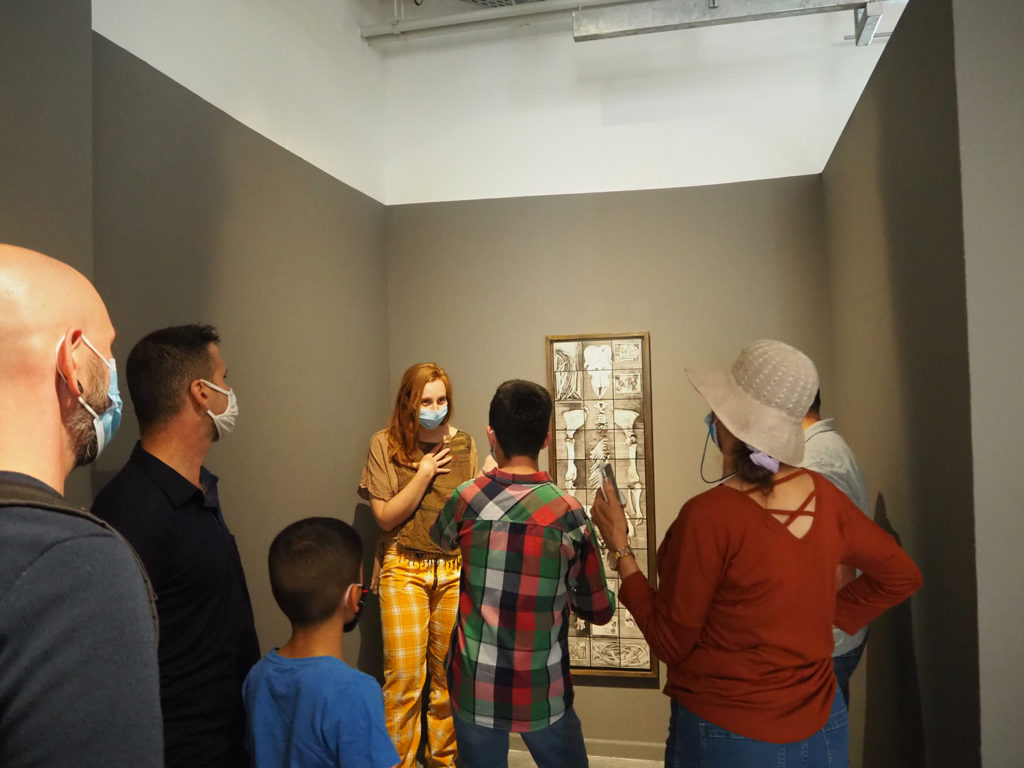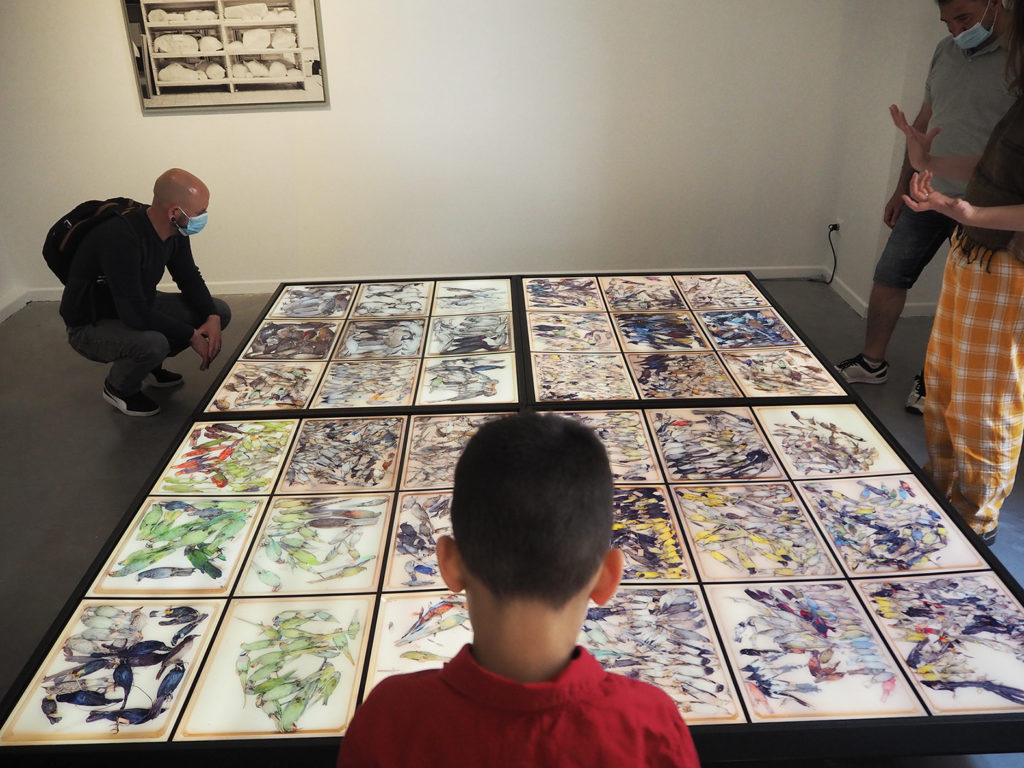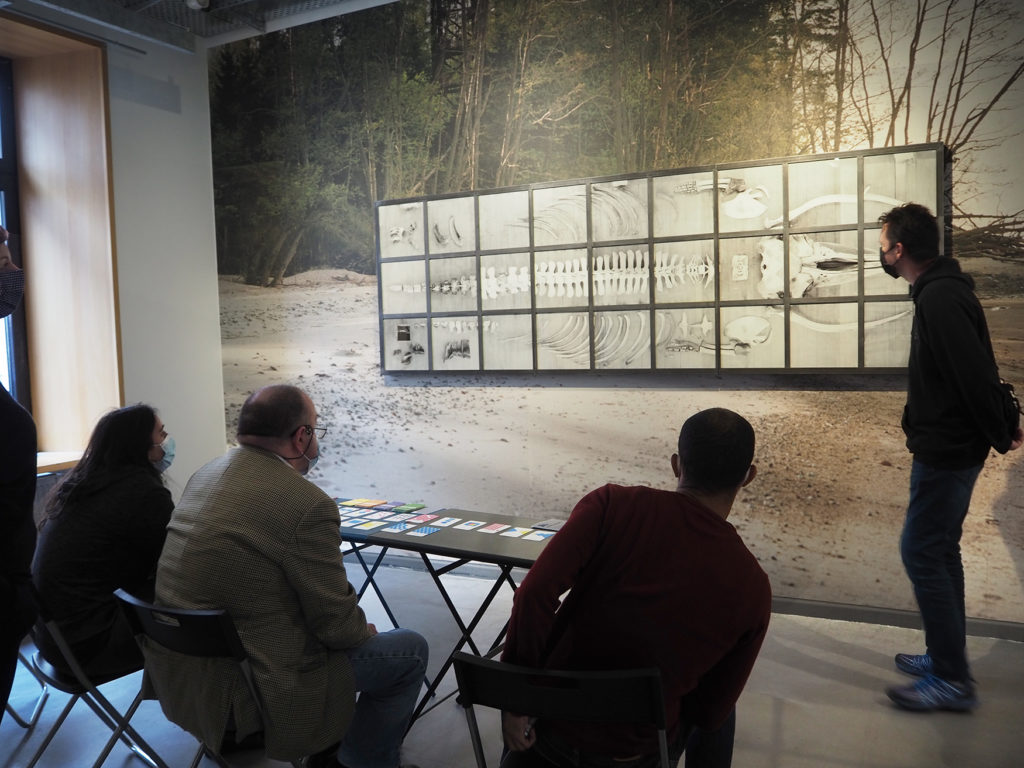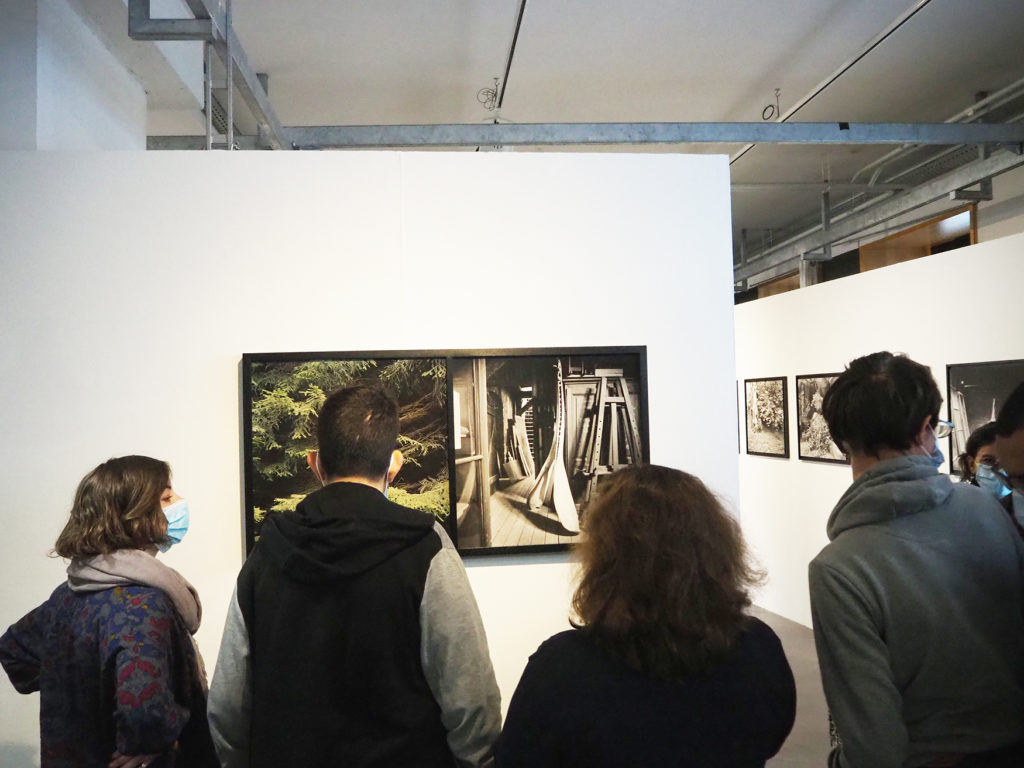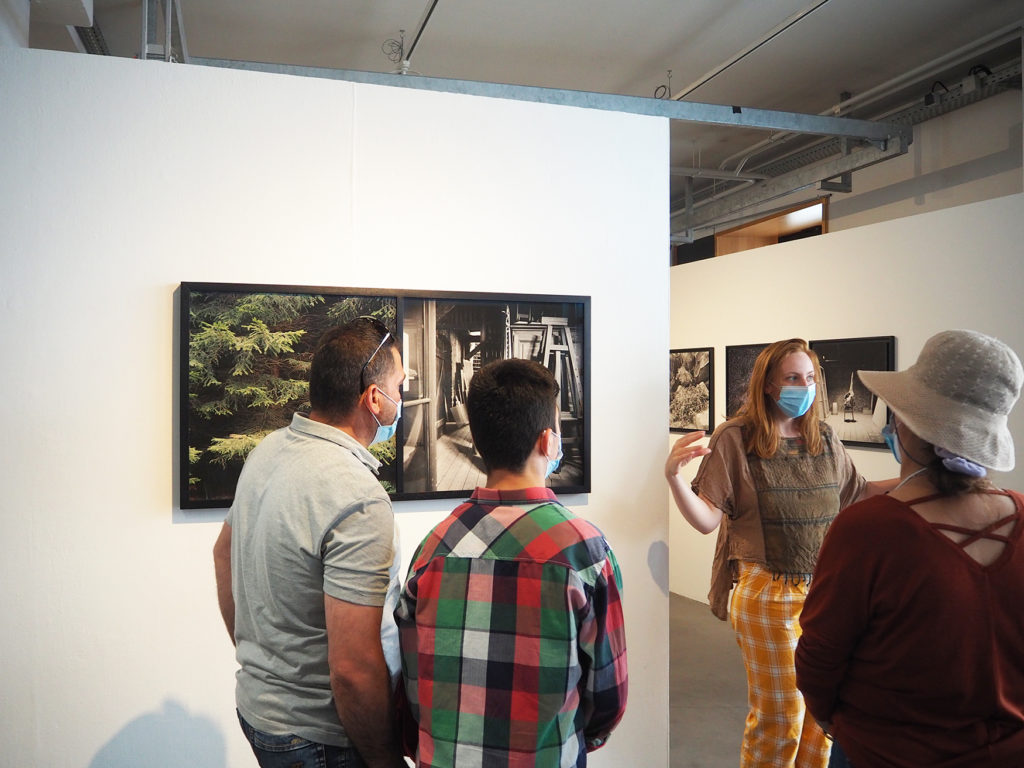What is the relationship between a reconstituted whale skeleton, bleached corals and a seemingly isolated beach, if not the influence of human societies? In the exhibition Edges, Vincent Chevillon explores frontier territories, those that are built on the margins, at the often porous limit between two environments. This is where his photographs are located, between different worlds.
Leading both an artistic project and a real ethnographic survey, Vincent Chevillon has been scouring the collections of natural history museums in the cities of Strasbourg, Liège, Brussels and even Mons for several years. These museums are veritable cabinets of curiosities from the 19th century in which he dives, device the first, to immortalize the second life of mammals, birds, and other sometimes more enigmatic creatures.
Through the pieces kept in these museums, the artist questions our relationship to the world and to nature, our way of using them, of subjugating it to our desires. Upon entering the exhibition, the visitor is greeted by a monumental muskox: he is placed there, like a Lamassu, a great protective figure of Akkadian tradition. But, in the era of the Anthropocene *, if everyone took up their responsibilities, to whom should the role of guardian of the living fall? In this permanent fascination / museification duality that molds the human being, Vincent Chevillon shows us, on the one hand, these confined creatures, while on the other, he takes us to the great outdoors, to the forests, to the archipelagic beaches. **.
Like a mind map ***, the artist works by association of ideas. Each photograph draws its inspiration from constantly renewed soil, and the resulting devices are in essence evolving and nourished by various references. Vincent Chevillon's photography is powerful; light sculpts shapes and contrasts, creating images of monumental fragility.
* ANTHROPOCENE : human impact: current period of geological time, when human activities have strong repercussions on the planet's ecosystems (biosphere) and transform them at all levels. The start of the Anthropocene is made to coincide with the period of the industrial revolution, in the 18th century (Larousse).
** ARCHIPELAGIC: relating to an archipelago. Water bathing the archipelagos and whose legal regime is comparable to that of territorial waters (Universalis).
*** HEURISTIC CARD: diagram that represents the meaningful connections between different ideas, the hierarchical links between different concepts. Synonyms: idea map, thought diagram, “mindmap”, mental map, idea tree.
“BOXING” WORKSHOP
Vincent Chevillon's photographs are often compartmentalized into multiple spaces, such as entomology boxes containing butterflies and insects in museums, or grid sites * during archaeological research. This distribution allows the artist to evoke these museographic devices as well as archeology, but also creates an impression of strangeness.
After setting up a photography studio within the exhibition itself (depending on the age of the participants, this setting up was done by the young people or by Stimultania upstream), the participants reflected on a staging allowing them to reveal only fragmented parts of their body by means of furniture divided into boxes. Using the tools provided by Stimultania, they could work on contrasts and light in their photographs and thus appropriate the technical dimension of a shot. Like real archaeologists, the participants also placed a tape measure next to their final composition to immerse themselves in an archaeological excavation context.
* BODY: in archeology, the grid is a grid technique making it possible to locate the place from which an object was extracted, and to draw up the cartography of the place of excavations (Wikipedia).
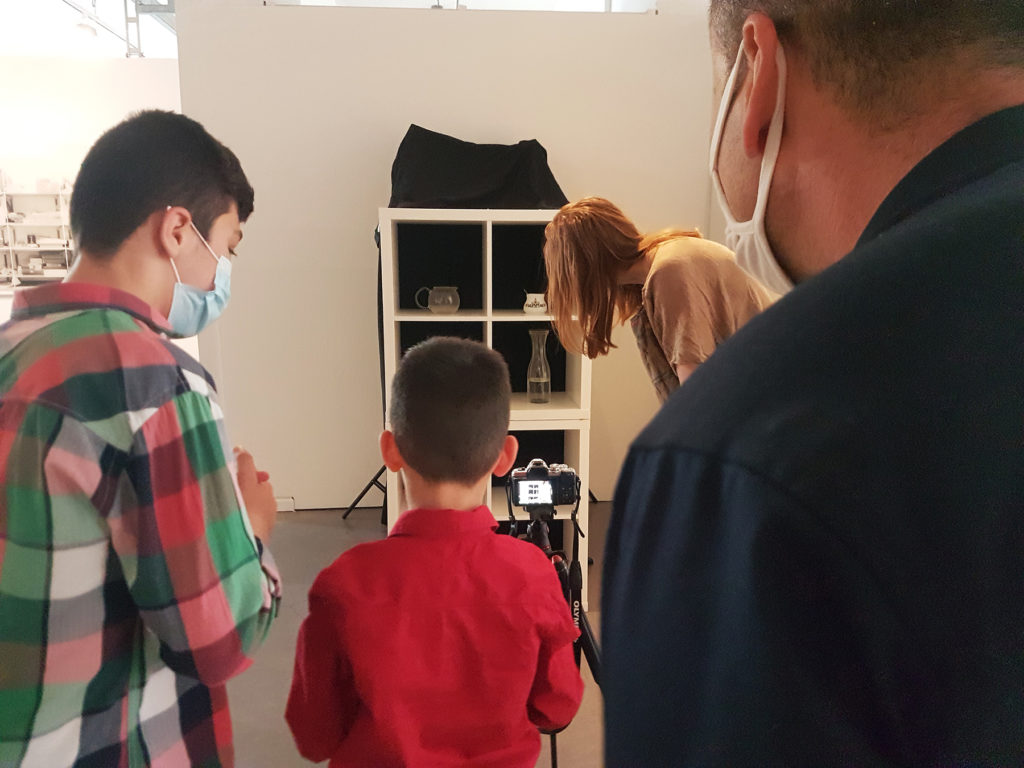
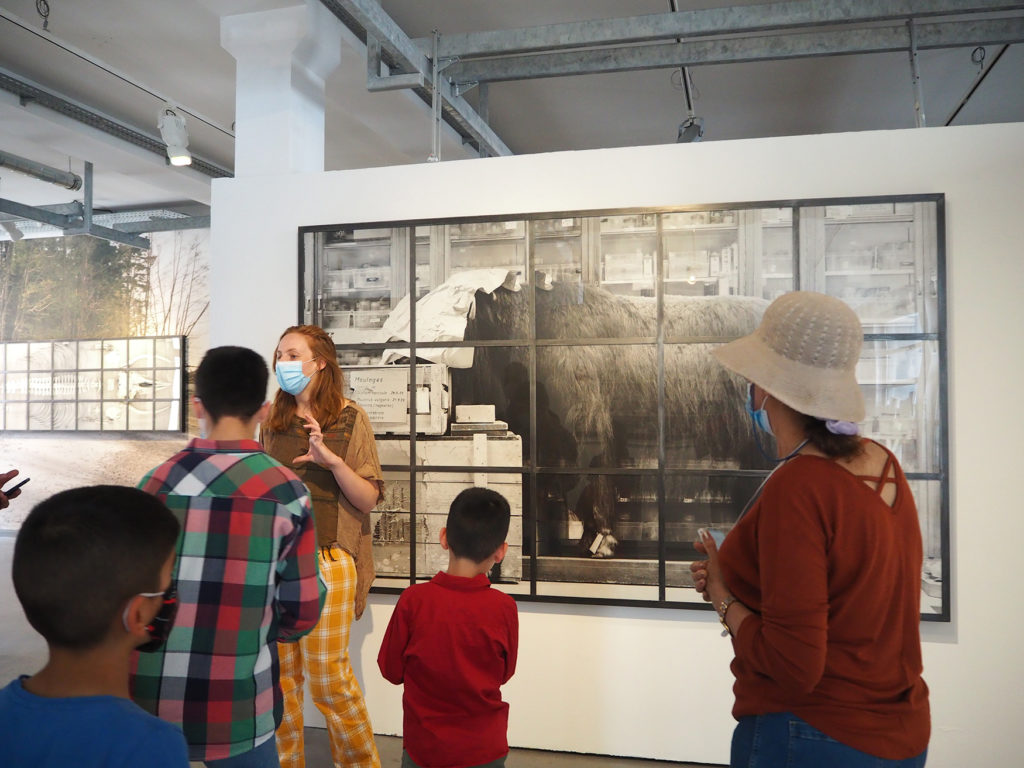
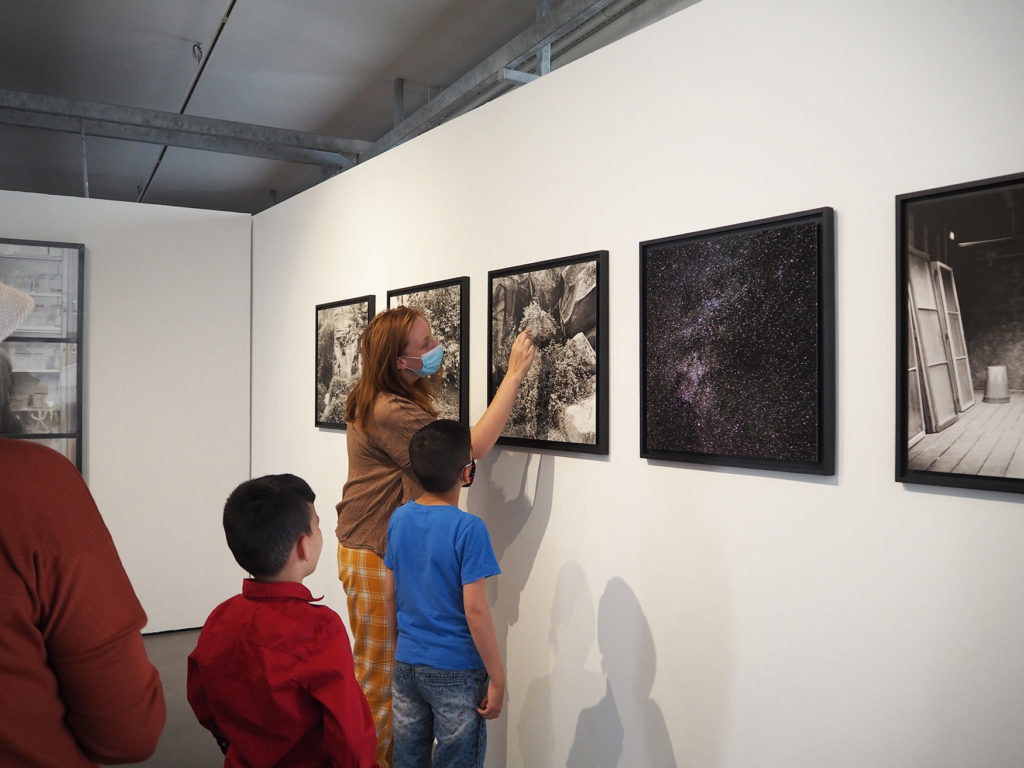
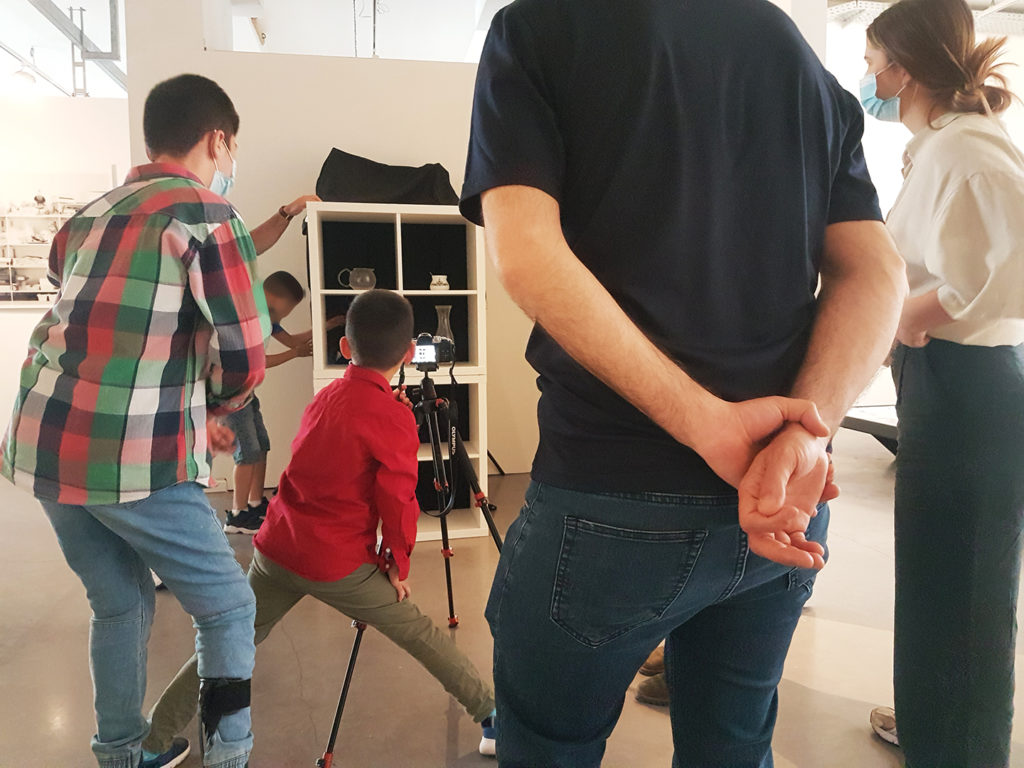
WORKSHOP “DRAW ME A CHIMERA”
In this exhibition, the artist Vincent Chevillon presents several skeletons of mysterious and imposing animals; in the photographs, the different parts of the creatures' bodies are distributed in several boxes.
First, the children were led to guess which animal one of the skeletons came from. They studied it and interpreted what they saw. Then, divided into small groups of three, they each drew a part of this animal (head, middle of the body, back of the body), and assembled the different parts of the animal to create colorful and strange chimeras.
During the last part of the workshop, the children returned to the photograph of the selected skeleton to discover which animal it really was, thanks to the explanations of the mediator.
Finally, depending on the level of the children, they photographed their creation next to the original skeleton, working on depth of field and the notion of scale, in order to approach basic photographic practices.
